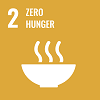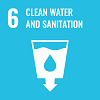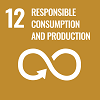On this page
- Executive summary
- Section 1: Introduction to the Departmental Sustainable Development Strategy
- Section 2: Canadian Food Inspection Agency's sustainable development vision
- Section 3: Listening to Canadians
- Section 4: Canadian Food Inspection Agency's commitments
- Section 5: Integrating sustainable development
Executive summary
The Canadian Food Inspection Agency (CFIA) has been a participant in the Federal Sustainable Development Strategy (FSDS) since 2010. The FSDS is the Government of Canada's primary vehicle for sustainable development planning and reporting. It sets out sustainable development priorities and establishes goals and targets. The 2022 to 2026 FSDS presents the Government of Canada's sustainable development activities, as required by the Federal Sustainable Development Act (the act). In keeping with the objectives of the act (including to make environmental decision making more transparent and accountable to Parliament), the CFIA supports the implementation of the 2022 to 2026 FSDS through the activities described in this 2023 to 2027 Departmental Sustainable Development Strategy (DSDS).
Of the 17 established FSDS goals, the CFIA's contributions are primarily directed toward the following 5:
- goal 2: support a healthier and more sustainable food system
- goal 10: advance reconciliation with Indigenous Peoples and take action on inequality
- goal 12: reduce waste and transition to zero-emission vehicles
- goal 13: take action on climate change and its impacts
- goal 15: protect and recover species, conserve Canadian biodiversity
The CFIA's contribution to sustainable development also extends to the Sustainable Development Goal (SDG) 3, Good health and well-being, and to SDG 6, Clean water and sanitation of the United Nations 2030 Agenda.
The CFIA is specifically working toward the following targets:
- between 2023 and 2026, and every year on an ongoing basis, the Government of Canada will develop and table annual progress reports on implementing the United Nations Declaration on the Rights of Indigenous Peoples Act
- by 2030, the Government of Canada will divert from landfill at least 75% by weight of non-hazardous operational waste
- by 2030, the Government of Canada will divert from landfill at least 90% by weight of all construction and demolition waste
- the Government of Canada's procurement of goods and services will be net-zero emissions by 2050, to aid the transition to a net-zero, circular economy
- the Government of Canada will transition to net-zero carbon operations for facilities and conventional fleets by 2050
- the Government of Canada will transition to climate-resilient operations by 2050
Progress toward these targets and implementation strategies identified herein will be reported through annual DSDS reports.
Section 1: Introduction to the Departmental Sustainable Development Strategy
The 2022 to 2026 Federal Sustainable Development Strategy (FSDS) presents the Government of Canada's sustainable development goals and targets, as required by the Federal Sustainable Development Act (the act). This is the first FSDS to be framed using the 17 Sustainable Development Goals (SDGs) of the United Nations 2030 Agenda and provides a balanced view of the environmental, social and economic dimensions of sustainable development.
In keeping with the purpose of the act, to make decision making related to sustainable development more transparent and accountable to Parliament, the CFIA supports the goals laid out in the FSDS through the activities described in this Departmental Sustainable Development Strategy (DSDS).
The act also sets out 7 principles that must be considered in the development of the FSDS as well as DSDSs. These basic principles have been considered and incorporated into the CFIA's DSDS.
In order to promote coordinated action on sustainable development across the Government of Canada, this departmental strategy integrates efforts to advance Canada's implementation of the 2030 Agenda National Strategy, supported by the Global Indicator Framework (GIF) and Canadian Indicator Framework (CIF) targets and indicators. The strategy also now captures SDG initiatives that fall outside the scope of the FSDS to inform the development of the Canada's Annual Report on the 2030 Agenda and the SDGs.
Section 2: Canadian Food Inspection Agency's sustainable development vision
The sustainable development vision of the CFIA is to:
- be a trusted, science-based regulator that safeguards food, animals and plants through a One Health approach
- support Canada's economic, social and environmental health
- improve the quality of life for future generations
As part of its mandate, the CFIA—in collaboration and partnership with all Canadians through a Citizen and Community Science approach, as well as with Indigenous Peoples, industry, and federal, provincial, territorial and municipal governments—is dedicated to safeguarding food, animals and plants, which enhances the health and well-being of Canada's people, environment and economy. As risks to the health of animals, humans, plants and their ecosystems are often interconnected, the CFIA strives to utilize a One Health approach in the management of those risks. The current and future economic prosperity of the Canadian agriculture and forestry sectors relies on a healthy and sustainable animal and plant resource base. As such, the CFIA is continually improving its program design and delivery in the animal health and plant resource areas to minimize and manage risks, and to consider the social, economic and environmental aspects of sustainable development.

Canada's natural spaces and agricultural lands provide habitats that wildlife populations need to thrive. They also provide ecosystem services that are essential for our well-being, such as growing food, controlling floods, supporting pollination, filtering our air and water, and storing carbon dioxide, an important greenhouse gas (GHG). Maintaining biodiversity—the variety of genes, species and ecosystems, including the ecological processes that allow them to evolve and adapt—helps ensure that ecosystems can continue to function and provide the services we depend on. Healthy wildlife populations and habitats are important parts of biodiversity. Some species in Canada have experienced population declines as a result of habitat loss or deterioration from human activities (for example, in riparian areas).
The CFIA aims to mitigate risks to Canada's plant resource base, which is integral to a safe and accessible food supply, as well as to public health and environmental sustainability. This goal is achieved by:
- regulating agricultural and forestry products, and other products that may be pathways for pests
- mitigating risks to the plant resource base (including crops and forests) from regulated pests
- regulating the quality and integrity of seeds, as well as the safety of plants with novel traits, fertilizers and supplements
- managing plant health emergencies and incidents
Our activities support Canada's 2030 Nature Strategy, for example, by reducing the negative impacts of invasive alien species on biodiversity and ecosystem services. These activities include identifying and managing pathways of alien species to prevent their introduction and establishment.
Through the Plant Breeders' Rights intellectual property protection, the CFIA aims to enhance the climate resilience of our agricultural and horticultural plant varieties by encouraging increased investment in plant breeding in Canada, while fostering greater accessibility to foreign seed varieties for farmers. Achieving these objectives instills confidence in Canada's plants, plant production systems and plant products, and contributes to the health of Canada's plant resources.
In collaboration with domestic and international partners, and in support of sustainable food systems, the CFIA has adopted a One Health approach. It focuses on the connections between the health of humans, animals, plants and their ecosystems to address serious and growing health threats, such as antimicrobial resistance and pathogens. It is through this approach that the CFIA guards against deliberate threats to the plant and resource base (for example, by establishing biocontainment levels for pests and diseases that are new or emerging, and regulating the biocontainment and biosecurity requirements that are needed to protect the Canadian public and the environment).

The CFIA aims to mitigate risks to Canada's animal resource base, animal feeds and animal products — which are integral to a safe and accessible food supply system — and to public health. This goal is achieved by:
- mitigating risks to Canada's animals (including livestock and aquatic animals) from regulated diseases
- managing animal disease emergencies and incidents
- mitigating and managing risks to livestock and derived food products associated with feed
- promoting animal welfare
- protecting against deliberate threats to the animal-resource base
The CFIA mitigates risks associated with animal diseases that can be transmitted to humans. It controls diseases within animal populations (for example, through inspections and disease response measures) and advocates for the prudent use of antimicrobials in livestock production to mitigate antimicrobial resistance. The agency also addresses climate change impacts through numerous actions, for example, by studying vector-borne diseases through surveillance programs, developing new diagnostic testing methods, and collaborating with scientists working in federal, provincial and international laboratories. Through these actions, the CFIA supports the health of Canada's animal resources and instills confidence in the safety of Canada's animals, animal products and by-products, and production systems.

Canada's food systems, including agriculture, aquaculture, fisheries and food and beverage processing, provide safe and healthy food for Canadians, help ensure long-term food security, and are an important part of our economy. Protecting our environment, including freshwater and soil quality, will help ensure our food systems continue to feed Canadians with safe products and create jobs over the long term. To support safe and secure food, the CFIA, in cooperation with other federal departments, provincial governments and industry associations:
- sets policies and verifies regulatory compliance to prevent food contamination, hazards, and misrepresentation
- has begun identifying options for the processing, sale and trade of traditional foods, which will support to address regional food insecurity issues
- monitors changes in the risk landscape that may contribute to unsafe and misrepresented food because of supply chain disruptions associated with climate change
- supports sustainable development in developing countries, for example, through technical support, under SDGs 2, 3 and 15, as recorded under the Total Official Support for Sustainable Development
The CFIA also contributes to promoting sustainable food production systems domestically by:
- providing a regulatory framework for the certification of organic food products
- registering climate-resilient seeds and crops
- supporting our farmers' market access to safe and innovative agricultural inputs, such as fertilizers and supplements



In support of Canada's 2030 Nature Strategy, the CFIA contributes to reducing pollution risks and the negative impacts of pollution to levels that are not harmful to biodiversity and ecosystem services.Footnote 1 This is achieved through accurate labelling of fertilizer and supplement products to enable their safe and sustainable use. New product registrations also facilitate grower access to innovative inputs. The CFIA also administers safety standards for contaminants, including organic waste recycled as fertilizers or soil conditioners. These activities, along with the CFIA's efforts to improve the energy efficiency of its buildings and fleet and adopt green procurement practices, support the Greening Government Strategy,Footnote 2 notably by reducing GHG emissions.
The CFIA also sets labelling requirements for consumer protection and to provide information that helps inform consumer purchasing decisions. Complementing Agriculture and Agri-Food Canada's work on food waste under the Food Policy for Canada, the CFIA regularly conducts outreach campaigns to increase consumers awareness of the purpose of date labelling which may help reduce food waste.Footnote 3
The CFIA's fight against climate change also includes adaptation efforts. In support of the National Adaptation Strategy and of the Greening Government Strategy, the CFIA is:
- assessing at least every 5 years climate change risks to agency assets, services and operations
- developing, releasing and updating on an annual basis a CFIA Climate Change Adaptation Action Plan to support addressing risks and vulnerabilities identified under its climate change assessmentFootnote 4
- incorporating climate change considerations into agency business continuity planning, departmental risk planning and program design considerations
In compliance with the Canadian Net-Zero Emissions Accountability Act—the federal framework of accountability and transparency on Canada's efforts to achieve net-zero GHG emissions by the year 2050—the CFIA reports key measures it has taken to manage its financial risks and opportunities related to climate change on an annual basis.Footnote 5

A distinctive feature of the 2030 Agenda for Sustainable Development is its emphasis on reaching the poorest and most vulnerable, including all children, youth, persons with disabilities, immuno-compromised, older persons, and Indigenous Peoples. The CFIA recognizes that food insecurity and food safety issues, the degradation of ecosystem services, and the spread of infectious diseases do not impact Canadians evenly due to different exposures and social determinants of health and health inequalities. Indigenous Peoples are more severely affected by social, environmental and economic impacts. To mitigate those inequalities, the CFIA, along with other federal departments and agencies, is required to implement the United Nations Declaration on the Rights of Indigenous Peoples Act (UNDA) and is using the Gender-Based Analysis Plus analytical process to support the development of responsive and inclusive initiatives, including regulations, programs and services.
More information on the CFIA's work to contribute to sustainable development can be found in the Departmental Reports.
Section 3: Listening to Canadians
As required by the Federal Sustainable Development Act, the CFIA has taken into account comments on the draft 2022 to 2026 FSDS made during the public consultation held from March 11 to July 9, 2022. During the public consultation, more than 700 comments were received from a broad range of stakeholders, including governments, Indigenous organizations, non-governmental organizations, academics, businesses, and individual Canadians in different age groups and of various backgrounds. The draft FSDS was also shared with the appropriate committee of each House of Parliament, the Commissioner of the Environment and Sustainable Development, and the Sustainable Development Advisory Council for their review and comment.
What we heard
Across the submissions received, the CFIA identified sustainable development priorities and issues that affect the agency's operations.
Under Goal 15 (Life on Land: Protect and Recover Species, Conserve Canadian Biodiversity), to which the CFIA is a contributing department, a key comment urged "more involvement from younger generations." As Canada's national plant protection organization, the CFIA monitors imports and the domestic movement of plants, plant products and other things to prevent entry and spread of plant pests. The CFIA also conducts surveillance to determine the presence of plant pests or confirm that an area is free of a specific plant pest. These activities are critical for protecting Canada's biodiversity. The CFIA has a history of working with youth on plant protection and biodiversity through schools and community groups.
The FSDS Consultation Report also identified the need for the integration of Indigenous knowledge into targets, milestones and implementation strategies. With a mandate to safeguard the food supply, plant and animal health, the CFIA recognizes the relationship between its mandate and the importance of these resources to Indigenous Peoples' spirituality, traditions and ways of life.
What we did
The CFIA took the above-mentioned key priorities and issues into consideration in preparing this DSDS. For example, the CFIA will monitor engagement activities with youth that relate to the prevention and detection of invasive alien species. A new youth engagement performance indicator and target, which supports the "Prevent, detect, respond to, control and manage invasive alien species" implementation strategy, was added within Goal 15 (Protect and Recover Species, Conserve Canadian Biodiversity).
With respect to Goal 10 (Advance Reconciliation with Indigenous Peoples and Take Action on Inequality), the CFIA will create an Indigenous Science Office to ensure that Indigenous perspectives and knowledge systems are included in agency activities. In addition, we will support the Truth and Reconciliation Commission of Canada's Call to Action 57 by initiating development of a training roadmap for the CFIA learning series.
For more information on the FSDS public consultation and its results, see FSDS Consultation Report.
Section 4: Canadian Food Inspection Agency's commitments

Goal 2: Support a healthier and more sustainable food system
FSDS context
The CFIA designs and delivers programs that verify the safety and accurate representation of food consumed by Canadians. The agency enforces sound, science-based rules that support the production and import of foods that consistently meet Canadian high-quality standards. Its food safety programs aim to prevent hazards in the food supply system and manage any food safety emergencies and incidents by working with industry and federal, provincial, territorial and international food safety partners.
Target theme: sustainable food systems.
Implementation strategies supporting the goal
This section is for implementation strategies that support the goal "Support a healthier and more sustainable food system" but not a specific FSDS target.
Implementation strategy: ensure the safety of Canada's food system.
| Departmental action | Performance indicator starting point target |
How the departmental action contributes to the FSDS goal and target and, where applicable, to Canada's 2030 Agenda National Strategy and SDGs |
|---|---|---|
|
|
|
| Same departmental action as above |
|
|
Initiatives advancing Canada's implementation of SDG 2 – Zero Hunger
The following initiatives demonstrate how the CFIA's programming supports the 2030 Agenda and the SDGs, supplementing the information outlined above.
| Planned initiatives | Associated domestics targets or ambitions and/or global targets |
|---|---|
| Protecting food production from plant diseases, pests, and invasive species | GIF target 2.1: by 2030, end hunger and ensure access by all people, in particular the poor and people in vulnerable situations, including infants, to safe, nutritious and sufficient food all year round |
| Supporting food security through the control of terrestrial and aquatic animal diseases | GIF target: 2.1 (see above) |
| Adopting a One Health approach—in collaboration with domestic and international partners and in support of sustainable food systems—that focuses on the connections between the health of humans, animals, plants and their ecosystems to address the serious and growing public health threat, for example, antimicrobial resistance | GIF target 2.4: by 2030, ensure sustainable food production systems and implement resilient agricultural practices that increase productivity and production, that help maintain ecosystems, that strengthen capacity for adaptation to climate change, extreme weather, drought, flooding and other disasters and that progressively improve land and soil quality |
| Supporting sustainable food production systems, increased agricultural yields, crop productivity, and innovation in the agricultural sector by ensuring that innovative agricultural inputs, such as fertilizers and supplements used by the farmer, do not contain toxic or harmful substances, such as pathogens, trace metals and other persistent organic pollutants | GIF target: 2.4 (see above) |
| Providing a regulatory framework that enables the registration of climate-resilient seeds and crops | GIF target: 2.4 (see above) |
| Authorizing research field trials and the unconfined environmental (commercial) release of plants with characteristics that are new to Canada, and whose traits may increase sustainable agricultural production practices | GIF target: 2.4 (see above) |
| Contributing to promoting sustainable development in developing countries as recorded using the Total Official Support for Sustainable Development international standard | GIF target 2.a: increase investment, including through enhanced international cooperation, in rural infrastructure, agricultural research and extension services, technology development and plant and livestock gene banks in order to enhance agricultural productive capacity in developing countries, in particular least developed countries |

Goal 3: Support mental health and adopt healthy behaviours
Initiatives advancing Canada's implementation of SDG 3 – Good health and well-being
The following initiatives demonstrate how the CFIA's programming supports the 2030 Agenda and the SDGs, supplementing the information outlined above.
| Planned initiatives | Associated domestics targets or ambitions and/or global targets |
|---|---|
| Protecting the health of Canadians and animals through the surveillance, prevention, and control of terrestrial and aquatic animal diseases, and facilitating access for producers and veterinarians to a wider range of safe, effective and quality new veterinary biologics and feed-related products in Canada | GIF target 3.3: by 2030, end the epidemics of AIDS, tuberculosis, malaria and neglected tropical diseases and combat hepatitis, water-borne diseases and other communicable diseases GIF target 3.d: strengthen the capacity of all countries, in particular developing countries, for early warning, risk reduction and management of national and global health risks |
| Adopting a One Health approach—in collaboration with domestic and international partners and in support of sustainable food systems—that focuses on the connections between the health of humans, animals, plants and their ecosystems to address the serious and growing public health threat, for example, antimicrobial resistance | GIF targets: 3.3 and 3.d (see above) |
| Contributing to promoting sustainable development in developing countries as recorded using the Total Official Support for Sustainable Development international standard | GIF target: 3.d (see above) |

Goal 6: Ensure clean and safe water for all Canadians
Initiatives advancing Canada's implementation of SDG 6 – Clean water and sanitation
The following initiatives demonstrate how the CFIA programming supports the 2030 Agenda and the SDGs, supplementing the information outlined above.
| Planned initiatives | Associated domestics targets or ambitions and/or global targets |
|---|---|
| Protecting the health of plants, animals, humans and the environment, including water-related ecosystems, through fertilizer and supplement product registrations and pre-market assessments. Mandatory labelling of fertilizers enables safe and sustainable product use and minimizes over-application, which leads to nutrient pollution and run-off | GIF target 6.6: by 2020, protect and restore water-related ecosystems, including mountains, forests, wetlands, rivers, aquifers and lakes |

Goal 10: Advance reconciliation with Indigenous Peoples and take action on inequality
FSDS context
The CFIA has initiated the complex process of recognizing the interrelationships between delivering on its mandate to safeguard food, animals, and plants (to all peoples living in Canada) while considering the potential impacts on Indigenous Peoples' science, spirituality, traditional practices, well-being, and ways of life.
In 2021, the Government of Canada adopted the UNDA, which provided new contexts, requirements, and obligations to ensure legislation is aligned with the declaration. The CFIA actively supports implementing the UNDA in cooperation and collaboration with other federal departments and agencies by:
- developing and implementing a policy framework to ensure legislation under CFIA authority is consistent with the UNDA
- implementing the UNDA Action Plan measures where the CFIA's mandate is implicated
- contributing to the UNDA Annual Report to demonstrate progress on CFIA implementation of relevant Action Plan measures
Taking the recommended steps to build meaningful relationships with Indigenous Peoples first involves ethically gathering Indigenous perspectives, lived experiences, and knowledge and further integrating these inputs in the delivery of CFIA activities. Investing in foundational training and supporting increased CFIA capacity to handle Indigenous files are some initial steps the CFIA has taken to advance reconciliation at a more rapid pace. Other actions include, but are not limited to:
- supporting the Truth and Reconciliation Commission of Canada's Call to Action 57 by developing a training road map for the CFIA, which recommends completing courses from the Canada School of Public Service's Indigenous learning series
- creating an Indigenous Science Office to integrate Indigenous perspectives and knowledge systems into CFIA activitiesFootnote 7
The CFIA reports progress toward the implementation strategy through annual progress reports on implementing the UNDA. As part of the implementation of the initiatives noted above, the CFIA will be developing indicators to track progress that will be incorporated into annual reporting.
This builds on the ongoing implementation of the Gender Based Analysis Plus (GBA Plus) and Assessment of Modern Treaty Impacts lenses, which recognizes the importance of integrating intersectional factors into decision making.
Target theme: advancing reconciliation with First Nations, Inuit, and the Métis communities.
Target: between 2023 and 2026, and every year on an ongoing basis, develop and table annual progress reports on implementing the United Nations Declaration on the Rights of Indigenous Peoples Act (Minister of Justice and Attorney General of Canada).
Implementation strategy: implement the United Nations Declaration on the Rights of Indigenous Peoples Act.
| Departmental action | Performance indicator starting point target |
How the departmental action contributes to the FSDS goal and target and, where applicable, to Canada's 2030 Agenda National Strategy and SDGs |
|---|---|---|
|
|
|

Goal 12: reduce waste and transition to zero-emission vehicles
FSDS Context
The CFIA is committed to enhancing its environmental management practices by:
- diverting more waste from landfill
- transforming its light-duty fleet by prioritizing the purchase of zero-emission vehicles (ZEVs)
- increasing its usage of clean electricity sources, and strengthening its green procurement criteria
The CFIA's asset base—which includes laboratories, quarantine and inspection stations, scientific equipment, a fleet, and information management and information technology assets—is critically important in supporting effective program delivery and, ultimately, the agency's mandate.
Target theme: federal leadership on responsible consumption.
Target: by 2030, the Government of Canada will divert from landfill at least 75% by weight of non-hazardous operational waste (All Ministers).
Implementation strategy: maximize diversion of waste from landfill.
| Departmental action | Performance indicator starting point target |
How the departmental action contributes to the FSDS goal and target and, where applicable, to Canada's 2030 Agenda National Strategy and SDGs |
|---|---|---|
|
|
|
| Same departmental action as above |
|
|
Target: By 2030, the Government of Canada will divert from landfill at least 90% by weight of all construction and demolition waste (All Ministers)
Implementation strategy: maximize diversion of waste from landfill.
| Departmental action | Performance indicator starting point target |
How the departmental action contributes to the FSDS goal and target and, where applicable, to Canada's 2030 Agenda National Strategy and SDGs |
|---|---|---|
|
|
|
Target: the Government of Canada's procurement of goods and services will be net-zero emissions by 2050, to aid the transition to a net-zero, circular economy (All Ministers).
Implementation strategy: transform the federal light-duty fleet.
| Departmental action | Performance indicator starting point target |
How the departmental action contributes to the FSDS goal and target and, where applicable, to Canada's 2030 Agenda National Strategy and SDGs |
|---|---|---|
|
|
|
| Same departmental action as above |
|
|
Target: the Government of Canada's procurement of goods and services will be net-zero emissions by 2050, to aid the transition to a net-zero, circular economy (All Ministers).
Implementation strategy: strengthen green procurement criteria.
| Departmental action | Performance indicator starting point target |
How the departmental action contributes to the FSDS goal and target and, where applicable, to Canada's 2030 Agenda National Strategy and SDGs |
|---|---|---|
|
|
|
| Same departmental action as above |
|
|
| Same departmental action as above |
|
|
| Same departmental action as above |
|
|
Implementation strategy: achieve total clean electricity use in federal property.
| Departmental action | Performance indicator starting point target |
How the departmental action contributes to the FSDS goal and target and, where applicable, to Canada's 2030 Agenda National Strategy and SDGs |
|---|---|---|
|
|
|

Goal 13: take action on climate change and its impacts
FSDS Context
The CFIA is committed to transitioning to net-zero carbon and climate-resilient operations, while also reducing environmental impacts beyond carbon, including on waste, water and biodiversity. Effort to manage the CFIA's climate change risks and vulnerabilities will support the National Adaptation Strategy and complement adaptation actions planned and implemented by our domestic and international partners.
Target theme: federal leadership on greenhouse gas emissions reductions and climate resilience.
Target: the Government of Canada will transition to net-zero carbon operations for facilities and conventional fleets by 2050 (All Ministers).
Implementation strategy: implement the Greening Government Strategy through measures that reduce greenhouse gas emissions, improve climate resilience, and green the government's overall operations.
| Departmental action | Performance indicator starting point target |
How the departmental action contributes to the FSDS goal and target and, where applicable, to Canada's 2030 Agenda National Strategy and SDGs |
|---|---|---|
|
|
|
|
|
|
|
|
|
Target: the Government of Canada will transition to climate resilient operations by 2050 (All Ministers).
Implementation strategy: reduce risks posed by climate change to federal assets, services and operations.
| Departmental action | Performance indicator starting point target |
How the departmental action contributes to the FSDS goal and target and, where applicable, to Canada's 2030 Agenda National Strategy and SDGs |
|---|---|---|
|
|
|
|
|
|
|
|
|
| Same departmental action as above |
|
|
Initiatives advancing Canada's implementation of SDG 13 – Climate action
The following initiatives demonstrate how the CFIA programming supports the 2030 Agenda and the SDGs, supplementing the information outlined above.
| Planned initiatives | Associated domestics targets or ambitions and/or global targets |
|---|---|
| Supporting timely product registrations issued under the Fertilizers Act to help facilitate market access for Canadian farmers and growers to innovative fertilizers, fertilizer additives, and other products that are specifically formulated to limit GHG emissions from agriculture and that offer alternatives to chemical fertilization regimes (for example, nitrification inhibitors, microbial supplements, plant biostimulants) | GIF target 13.2: integrate climate change measures into national policies, strategies and planning |

Goal 15: protect and recover species, conserve Canadian biodiversity
FSDS Context
As Canada's national plant protection organization, the CFIA:
- regulates the import and movement of plants, plant products and other things into and within Canada
- monitors imports to prevent entry of invasive plants and other plant pests
- conducts surveillance to determine the presence of invasive plant pests or to confirm that an area is free of a specific invasive plant pest
In addition to DSDS Reports, the CFIA also communicates progress made in the prevention, detection, response, control, and management of invasive alien species that are pests of plants through Canada's 2030 Nature Strategy reports.Footnote 18
Target theme: species protection and recovery.
Implementation strategies supporting the goal
This section is for implementation strategies that support the goal "Protect and recover species, conserve Canadian biodiversity" but not a specific FSDS target.
Implementation strategy: prevent, detect, respond to, control and manage invasive alien species that are pests of plants.
| Departmental action | Performance indicator starting point target |
How the departmental action contributes to the FSDS goal and target and, where applicable, to Canada's 2030 Agenda National Strategy and SDGs |
|---|---|---|
|
|
|
| Same departmental action as above |
|
|
|
|
|
| Same action as above |
|
|
|
|
|
Initiatives advancing Canada's implementation of SDG 15 – Life on land
The following initiatives demonstrate how the CFIA's programming supports the 2030 Agenda and the SDGs, supplementing the information outlined above.
| Planned initiatives | Associated domestics targets or ambitions and/or global targets |
|---|---|
| Contributing to promoting sustainable development in developing countries as recorded using the Total Official Support for Sustainable Development international standard | GIF target 15.a: mobilize and significantly increase financial resources from all sources to conserve and sustainably use biodiversity and ecosystems |
Section 5: integrating sustainable development
The CFIA will continue to ensure that its decision-making process includes consideration of FSDS goals and targets through its Strategic Environmental and Economic Assessment (SEEA) process.Footnote 21 An SEEA for a policy, plan or program proposal includes an analysis of the impacts of the given proposal on the environment and economy, including on relevant FSDS goals and targets.
Public statements on the results of the CFIA's assessments are published when an initiative has been announced or implemented. The purpose of the public statement is to demonstrate that the environmental and economic effects, including the impacts on achieving the FSDS goals and targets, of the approved policy, plan or program have been considered during proposal development and decision making.
The CFIA will further integrate sustainable development considerations into national policies, strategies and planning by applying intersectional factors to its decision making, including Gender-Based Analysis Plus and Assessment of Modern Treaty Impacts. More broadly, the CFIA will continue to promote sustainable development in developing countries using the Total Official Support for Sustainable Development international standard.
Building on our understanding of the risks posed by the impacts of climate change on our assets, services and operations across the country, the CFIA aims to take action to reduce those risks through measures identified under its Climate Change Action Plan.
